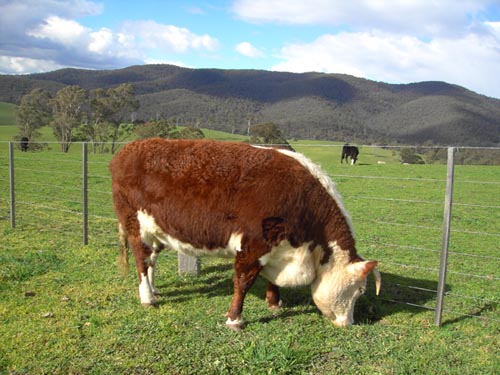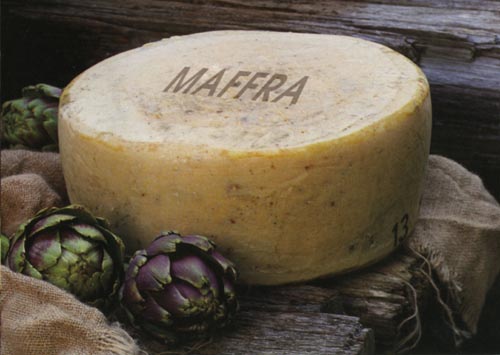Charabancs to Chardonnay:
This paper formed the basis of an address presented by Dr Haldane at Riversleigh Country Hotel, Bairnsdale, on 5 July 2002 at the East Gippsland Heritage Luncheon, as part of the East Gippsland Food and Wine Tourism Network ‘Beef and Heritage Week’. This address has been revised and presented a number of times since and was the beginning of Dr Haldane’s current work on a book in the making ‘A Gastronomic History of Gippsland’.
For those not familiar with Charabancs, they are perhaps best described as horse-drawn wagons or motorized coaches with benched seats for up to twenty-eight passengers. Early in the twentieth century they were a common sight in Gippsland and were a popular means of transport for tourists and diners moving between lake steamers, railway stations, guest houses, hotels and tourist destinations like the Buchan Caves. In the 1920s, Bunga Haven guest house at Lake Bunga was a noted culinary retreat and a popular tourist trek was to take a Charabanc to Bunga Haven for a crayfish dinner. If Charabancs serve as a symbol of the Gippsland tourist industry early last century, then Chardonnay must be one of the flagships of the region today. Chardonnay vines do extremely well in parts of Gippsland and the wines produced from them, notably those from Nicholson River and Narkoojee vineyards have been applauded by experts and drinkers nationally and internationally. Many people have a real interest in the links between food, wine and tourism and the opportunities that these things offer Gippsland now and into the future. My interest is similar but is centered on the gastronomic history of the region in the belief that history not only puts the present in its proper place but provides us with a context for the future. From the time of first settlement in the 1830s East Gippsland has been a region of primary producers and a tourist destination for those drawn by its vast expanse of native forests and unique blend of alpine country, oceans, lakes and rivers. At different points in the region’s history almost every type of agriculture and horticulture has been tried, including tobacco, hops, nuts, fruit & vegetables of all sorts and cereal crops. Some time back I was speaking with an old farmer, who was re-visiting the Buchan District and looking-out over a vast expanse of open country being grazed by Hereford cattle, he observed that the last time he visited that location it was all planted to wheat that was harvested with horse-drawn machinery.
Not only have Gippslanders traditionally been bountiful producers of all manner of agricultural & horticultural produce, including milk, cheese and butter; they have also been prolific harvesters of seafood; since earliest times selling produce to Melbourne, Tasmania, New Zealand and New South Wales. Despite this the region has always been bedeviled by the tyranny of distance and the cost and logistical challenge of accessing distant markets: and Gippslanders themselves have historically been slow to change and have not matched the food, wine and tourism industry developments of other parts of Victoria and Australia. At one time East Gippsland and the Monaro country in NSW was home to a very productive turkey breeding industry but the birds were so far from transport heads and markets that before they were herded to distant ports they were walked through tar to give them ‘soles’ on their feet, so that they could stand the journey.
Perhaps because of its past reluctance to change and relative isolation, vineyards, restaurants and other related tourism elements do not figure in the published histories of Gippsland: our historical records are replete with references about cricketers, footballers, forests and farmers but are relatively mute on the subject of restaurateurs, winemakers, food and tourism. Fortunately this is in the process of changing and new food and wine ventures are opening right across Gippsland. Quickly establishing themselves as brands that are much sought after, the region now boasts a superb range of award-winning cheeses, including Capra Goat Cheese, Jindi Cheese, Maffra Cheese and Tarago River Cheese. Lakes Entrance is the home of Riviera Ice Cream and the 100% certified organic range of ‘Aphrodite’ cosmetic milk products. And in the foothills of Swifts Creek at ‘Nullamunjie’ is Gippsland’s first High Country commercial olive grove.
Sitting alongside this primary producers’ repast – but never fully integrated into it - there has always been a viable Gippsland tourist industry, which has had to confront the same issues of distance and cost. It was once observed that visitors to East Gippsland were invariably the daringly adventurous or the wealthy: early last century a trip to Mallacoota took four days in good weather and involved taking a steamship to Eden; a coach from there to Genoa; and a row boat from there to Mallacoota. The arduous nature of this travel did however have its offsets, such as fresh oysters and bottled stout served on the train from Sale to Melbourne. Prior to the Second World War East Gippsland was dotted with coffee palaces and guest houses, comprising in part a modest tourist industry that catered for visitors to the Gippsland Lakes and hinterland but the region generally lacked adequate services and infrastructure. Tourism slowed during the 1930s depression and the war and by the 1950s the guest house era was passing: cars towing caravans and tourist parks initially replaced guest houses and motels with en suite facilities gradually replaced hotels: the second motel opened in Victoria was the Mitchell Valley Motel, which opened in Bairnsdale in 1957. Distance is no longer the challenge it once was and tourism is now a large regional employer but as a region Gippsland has been slow to sustainably integrate food, wine and tourism. Much of Gippsland is devoid of restaurants and for many years Gippsland was the only country region in Victoria not to boast a noted gourmet retreat or Age Good Food Guide restaurant deemed worthy of a chef’s hat. Fortunately this changed in 2007 when The Outpost Retreat at Noojee and Neilsons in Traralgon both scored their first chef’s hat in The Age Good Food Guide 2008. These were the first chef’s hats bestowed on a Gippsland restaurant since the former Powerscourt restaurant near Maffra last received a chef’s hat in 2001. Indeed, despite our bountiful farming & fishing industries it is still not common to see product in restaurants and eateries identified as Gippsland produce and diners are still confronted with the ubiquitous ‘South Australian whiting’ and other frozen food types from interstate and Asia. Proof that this doesn’t have to be the case can be found at John & Barb Snelling’s highly regarded restaurant ‘The Outpost Retreat’ at Noojee, where 85% of all the produce used is sourced from within Gippsland, including wine, meat, fish, poultry, game, fruit, vegetables, cream, cheese, herbs and honey. Since the 1850s there have been a number of attempts in Gippsland to develop vineyards. During the 1800s around twenty vineyards, mostly ranging in size from 0.25 to two acres, were established across Gippsland from Inverloch to Omeo. Most of them were producing grapes for domestic consumption but Louis Wuillemin at Delta Vineyard, Briagolong and the Estoppey Brothers at Phigi Vineyard, also at Briagolong, had Gippsland’s largest combined planting of seventeen acres. Due to a variety of factors almost all these formative vineyards had disappeared by the early 1900s. It was not until 1970 that commercial-scale grape growing was revived in Gippsland by Dacre and Pauline Stubbs, who established the ‘Lulgra’ vineyard at Lakes Entrance with plantings of Riesling, sauvignon blanc and Cabernet sauvignon. Their efforts were a harbinger for Gippsland’s viticultural renaissance. They were soon followed by close friend and neighbour, CSIRO scientist, Dr Malcolm Winfield, who also made experimental plantings at Lakes Entrance and former Allied Breweries brewer Robert Guy, who established the ‘Golvinda’ vineyard and winery at Lindenow South. In relatively quick succession commercial vineyards were established in 1975 by Gordon and Christine McIntosh at Briagolong Estate; in 1978 by Ken and Juliet Eckersley at Nicholson River Winery and Dr Chris Hill at Carrick Springs Vineyard (now Windy Ridge) near Foster; and in 1979 by Phillip Jones at Bass Phillip, south of Koonwarra. The Gippsland wine industry was clearly well on the way to achieving viability and sustainability: but there were still those who questioned whether there was any real regional link between food, wine and tourism. Much of what has been tried in Gippsland in the past has not been sustainable but recent years have seen the development of a nascent form of symbiosis between food, wine and tourism: bringing us to the present challenge of not only defining a region but of building and sustaining that integrated network of food, wine and tourism that has proved so elusive throughout Gippsland’s history. The recent release of Gippsland Food & Wine, a comprehensive 25-page guide to Gippsland food, wine, tourism, art and culture, is a clear indication that good things are happening in the region and that in time our regional history will be enriched by the stories of successful restaurateurs, winemakers and food producers. © - Robert Haldane (2008)
Other pages on this website
This page last updated on 15 December 2014 |


